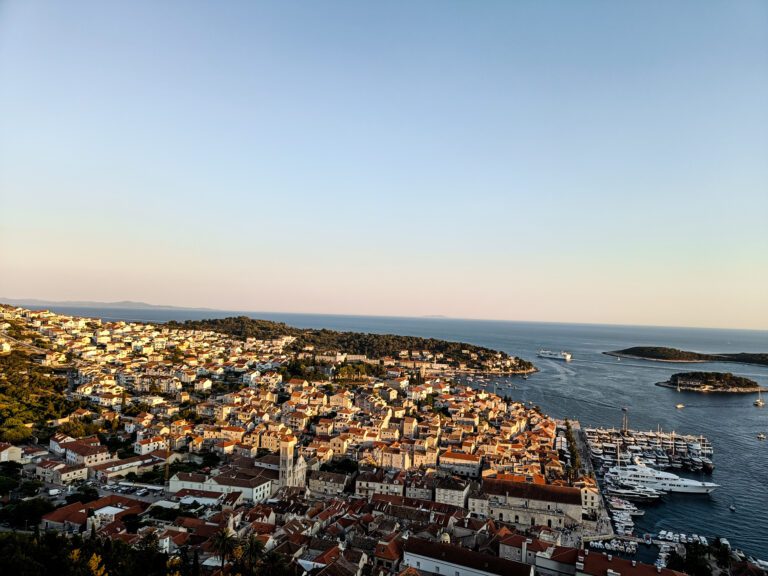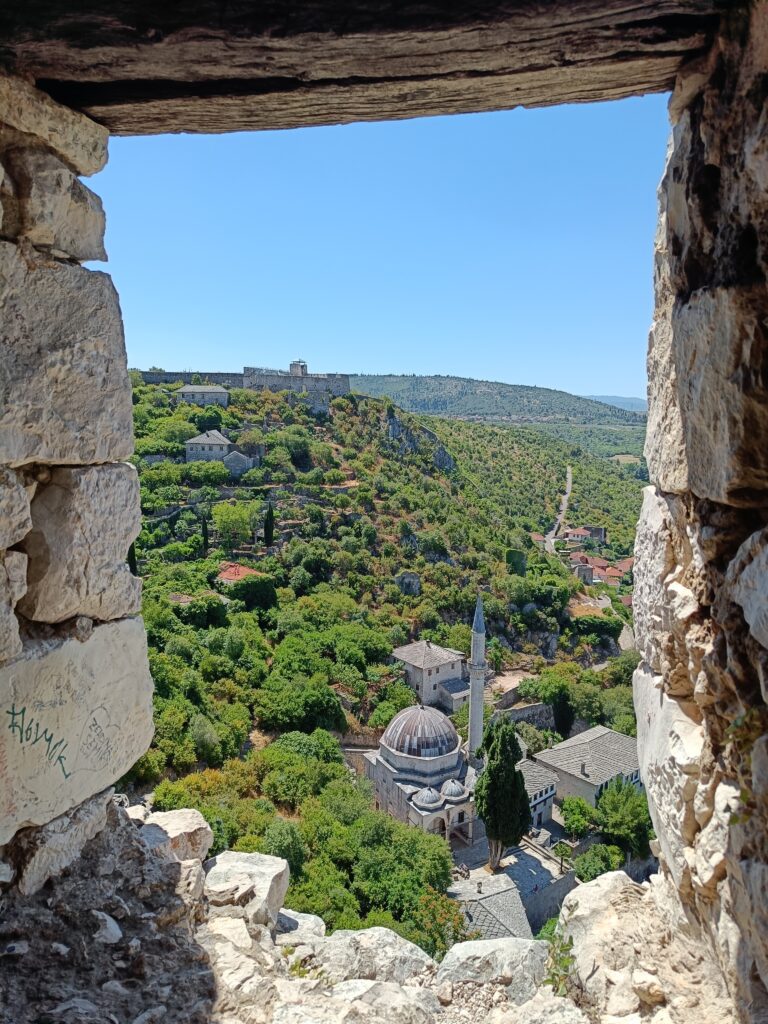
Day 1 - Arrival in Belgrade
Serbia is the first country of the Balkans you are visiting. You are flying into Belgrade, also known as the city that never sleeps. There is always something cool going on in this city. Whether it’s a DJ on the corner of a street playing music or a live band on the streets of Skadarlija. Make sure not to skip this bohemian street. The street where music and singing can be heard until the early hours of the morning.
Tip: Have you tried Serbian rakija? Serbia produces a lot of different flavors of rakija. Popular flavors are apple, apricot and pear flavor. My favorite rakija are the Orahovača, a walnut flavored rakija and the Medovača, a honey flavored rakija.
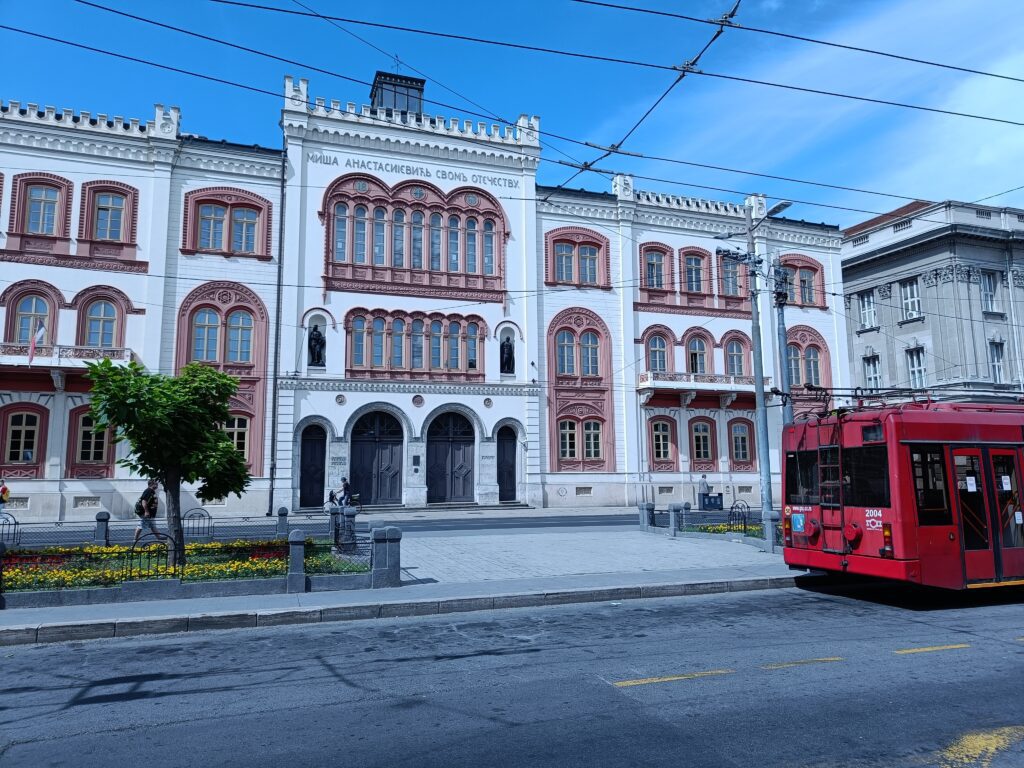
Day 2 - Belgrade
Do a walking tour through Belgrade and learn more about this city and its Ottoman heritage. Visit the Belgrade fortress and church of St Sava.
Book a sunset boat cruise over de river Danube and river Sava. Look at the beautiful landmarks and listen to what the guide has to say. Enjoy the sunset with a nice beverage. You could also look into Splavovi. Splav means raft. They are barges or boats that are permanently moored along the rivers. The boats could be restaurants, hotels or night clubs. If you prefer to stay on land you could check out the restaurants along the Sava Promenada (Sava Quay).
Day 3 - Niš
Take the bus to Nis. It takes around 3 hours to travel from Belgrade to Nis. Busses (Nis ekspres) depart frequent (about every 3 hours).
Visit Bubanj memorial park. A quiet place in the forest where you find three fists made out of stone. The fists represent rebellion, freedom and revolution. A place where more than 10.000 people died during WWII. The verses of Ivan Vuckovic from Nis say: “We were shot but never killed, and never conquered”.
Food tip: Check out Stambolijski.
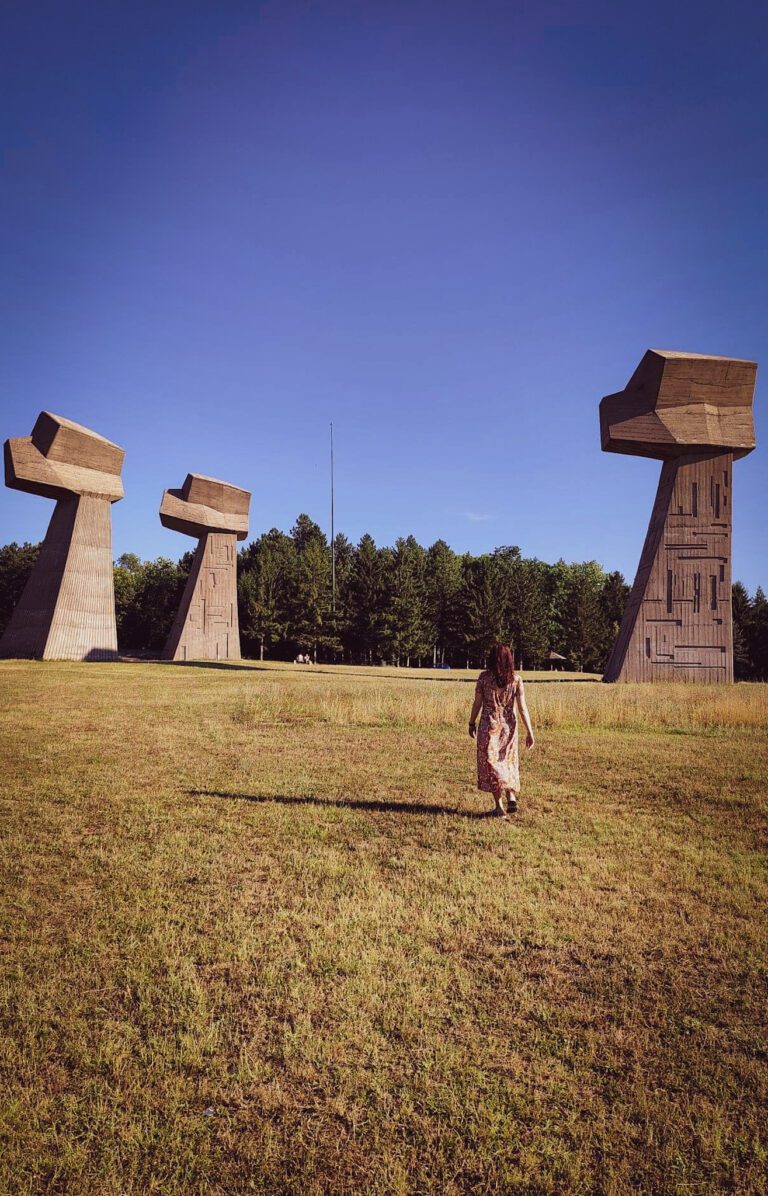
Day 4 - Niš
Visit the Skull tower and Nazi concentration camp Crveni Krst. Ask for a combined ticket at the entrance (300 Dinar) The combined ticket also includes the archaeological museum.
At the skull tower a guide will tell you the story of what happened in Nis during the Ottoman occupation in the 19th century.
After the visit to the skull tower make your way to the Nazi concentration camp. Walk around the campgrounds and read the stories of the people who survived. Unfortunately, there are no guided tours at the concentration camp.
At the end of the day walk around Nis fortress and enjoy a nice drink.
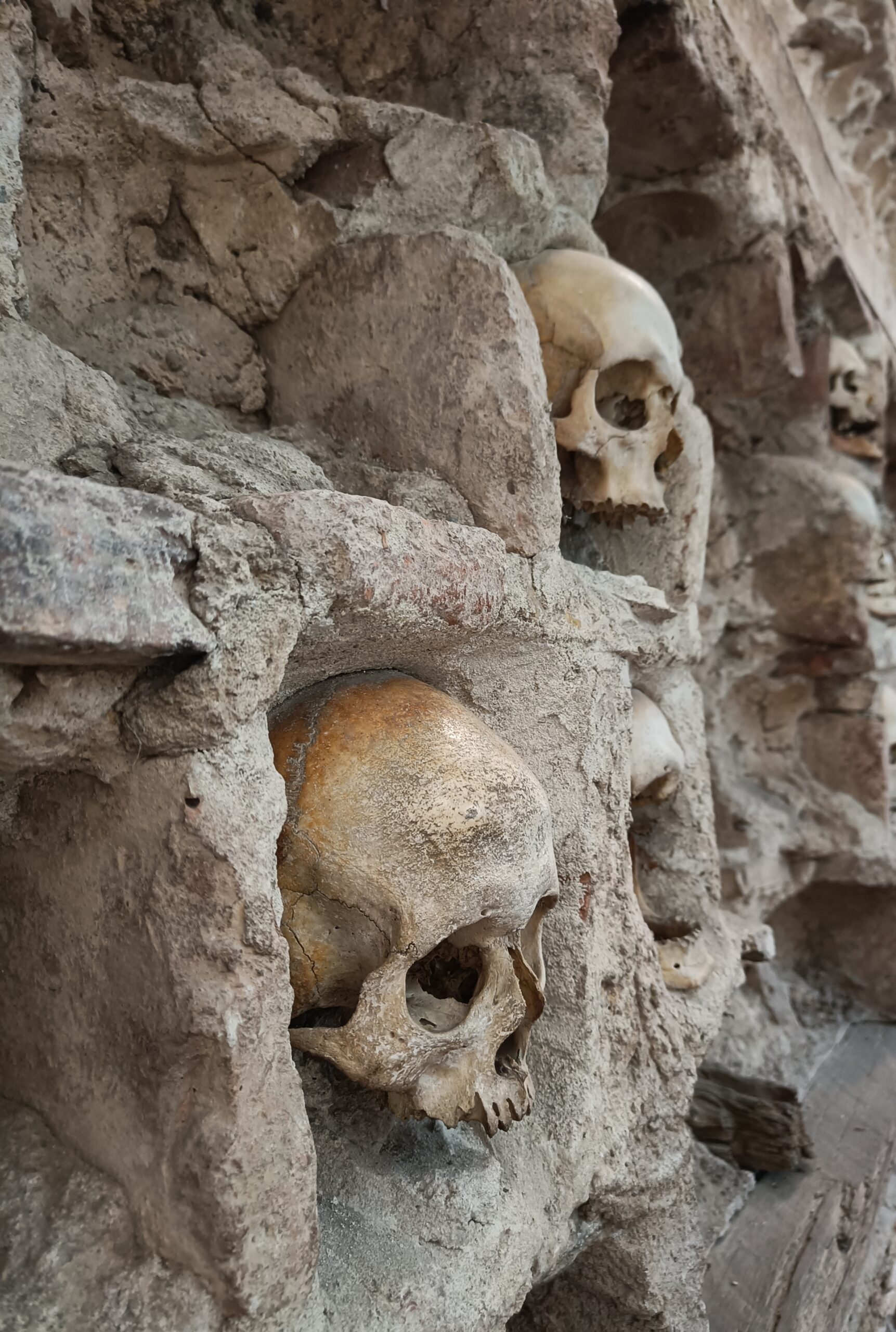
Day 5 - Novi Sad
Take the bus from Nis to Novi Sad. The drive takes about 4.5 hours, and the busses depart every 4 hours.
Novi Sad is the second biggest city of Serbia. It is known for the Exit festival that is organized every year. Check out their website for dates and tickets to the festival. The city of Novi Sad has beautiful old Habsburg buildings with great leather shops and bustling cafes and markets. It is not surpring that this city won the title of European Capital of Culture in 2022. Take a walk up to the Petrovaradin fortress. The city is also the gateway to the wineries and the national parks.
If you like to visit some wineries, you could book a day tour. The tour will most likely take you to Sremski Karlovci. You could also take the public bus. It takes less than half an hour. Keep in mind that if you decide to take the bus that some wineries won’t let you taste their wines if you are not part of a tour. You could still try the local wines at the restaurants in the center of Sremski Karlovci. If you feel like great food with a nice view over the river, try Pasent. This restaurant also serves wine from the region.
If you prefer to go for a hike, check out Fruska Gora. There are some beautiful hikes in this national park. Ask the visitor center in Novi Sad for the best hikes to do.
Brunch tip: Kombinat
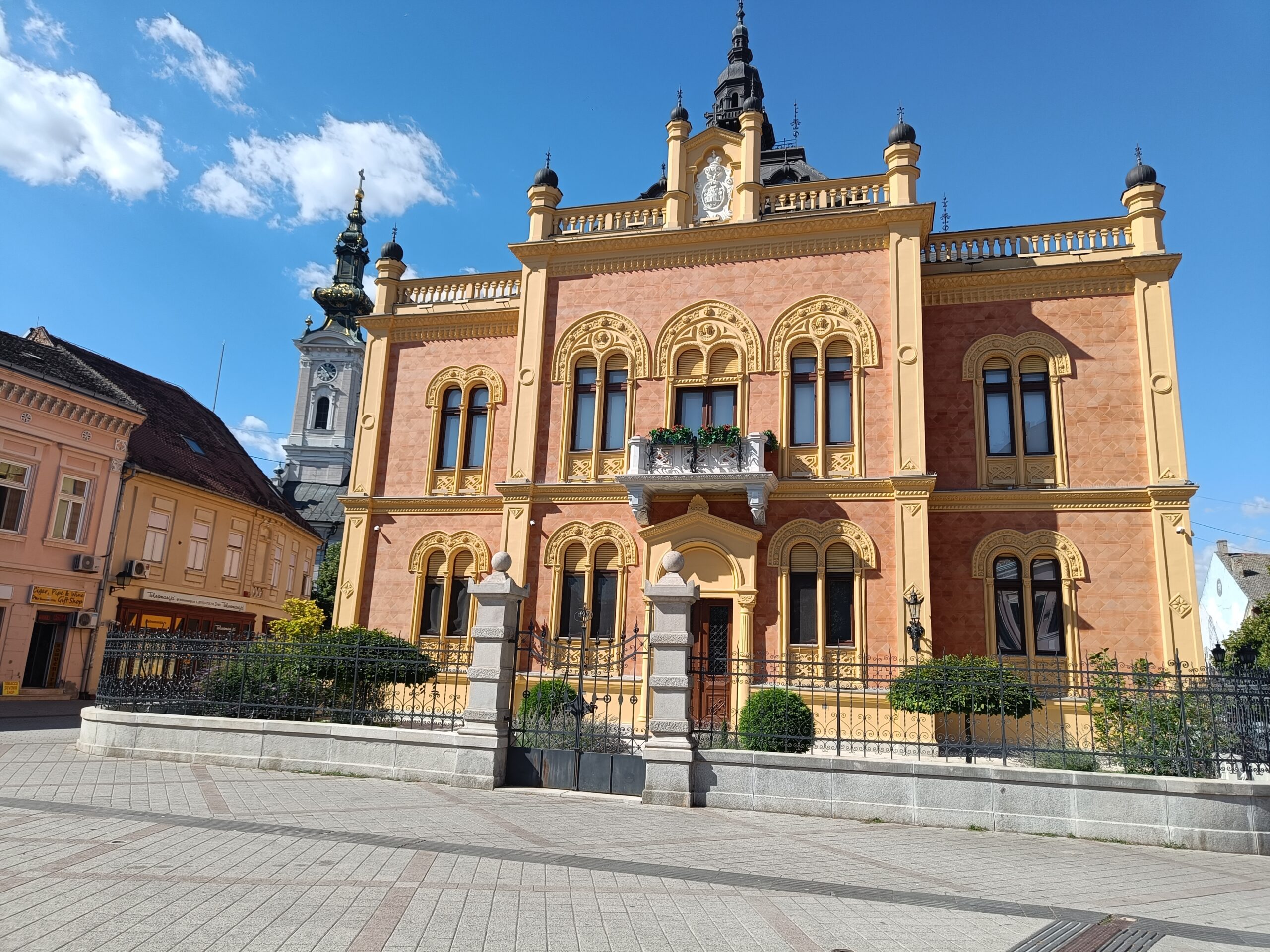
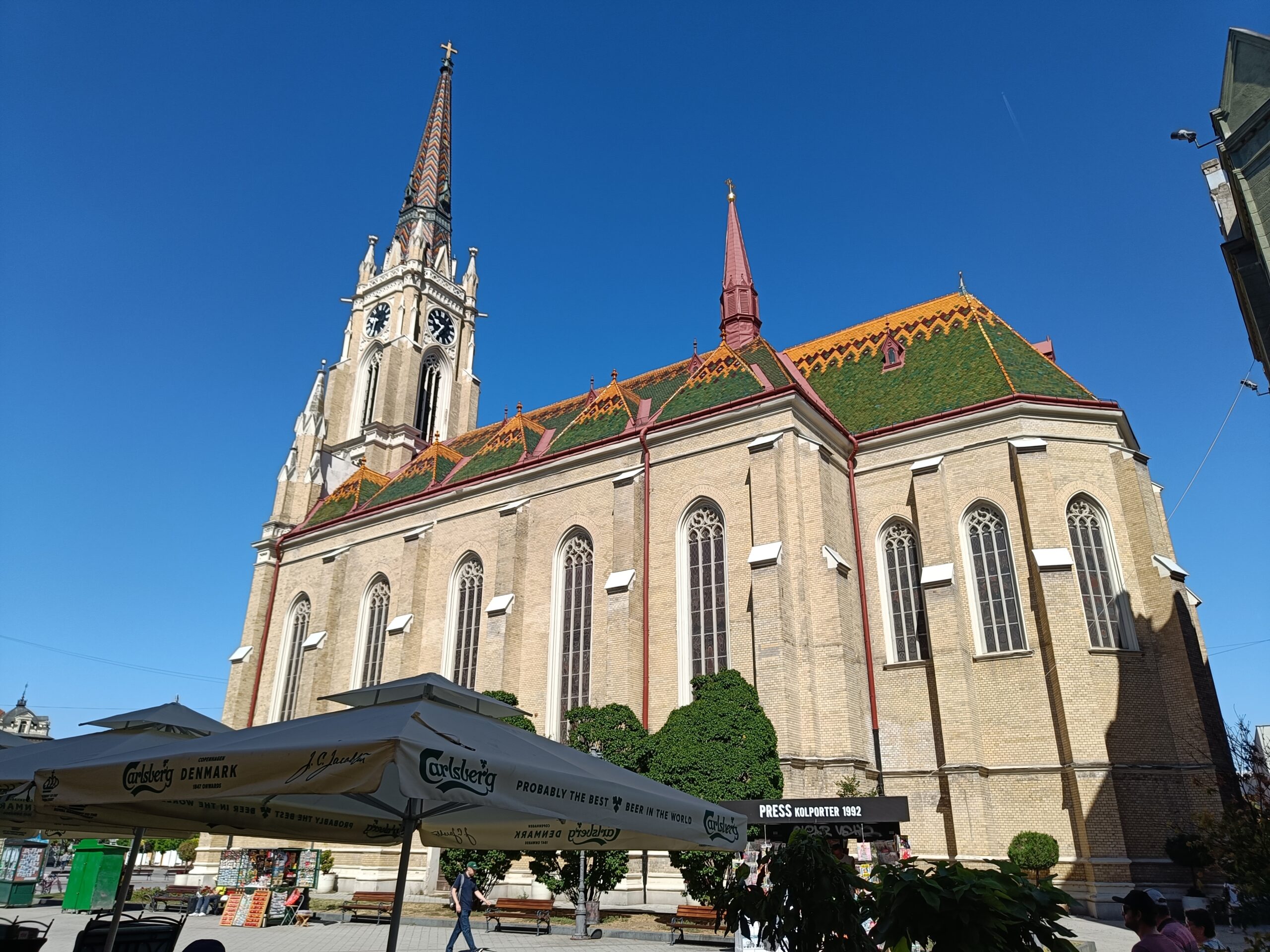
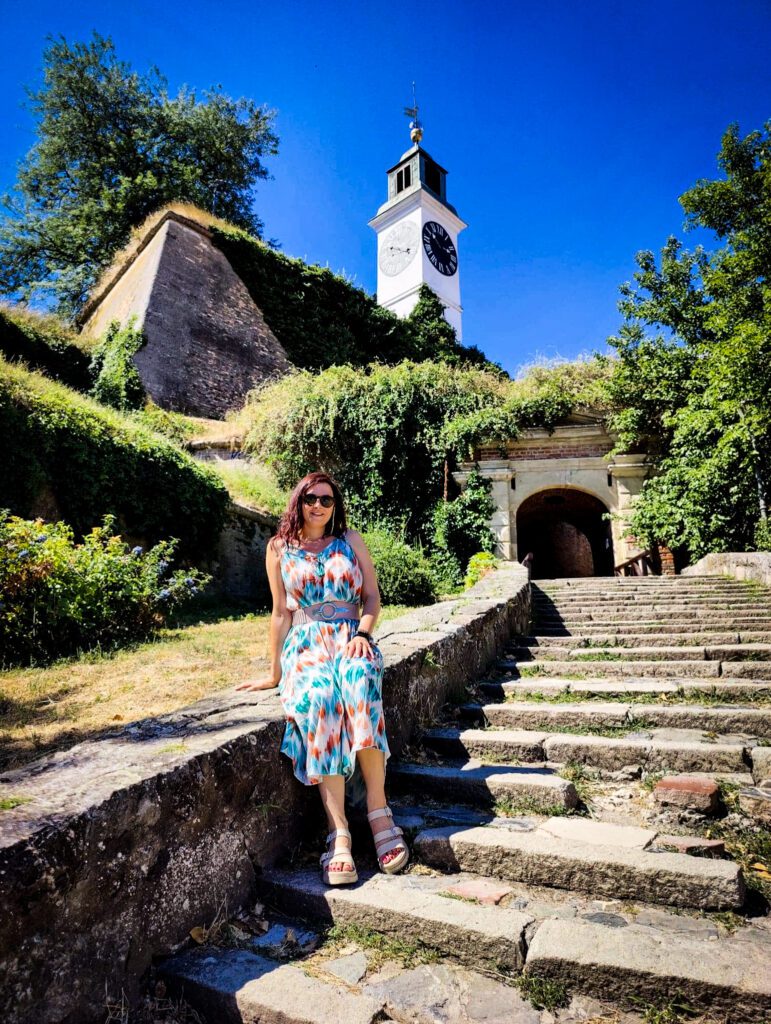
Day 6 - Novi Sad
Go for a swim at the river. Entrance fee to the strand is 50 dinars (0,40 Euro). It is a great place to relax. There are a few places where you can eat and have a drink. You can also find toilets and change rooms.
Enjoy the beautiful city of Novi Sad before taking the bus to Sarajevo. We took the Flixbus in the evening. Make sure you have your visa sorted and can enter Bosnia & Herzegovina (BIH). The bus will leave you at the border if you don’t have a visa to get into BIH.
Ice cream tip: Try the poppyseed ice cream at Crna Ovca.
Day 7 - Sarajevo
Welcome to Bosnia-Herzegovina, your second country in the Balkans. I wish we had more time in Sarajevo!
Do the free walking tour with Meet Bosnia. This tour is really great if you would like to know more about this city. Learn more about the assassination of Franz Ferdinand that sparked the First World War and other big events that happened right in the center of Sarajevo.
Check out the old town of Sarajevo and watch how the coppersmiths make their metal creations. Have a Bosnian coffee to finish off the day or if you feel more like a local beer head over to the Sarajevo brewery. Next to the brewery is a museum that tells the long history of the brewery and how important the brewery was during the siege as it is located next to a fresh water source.
Coffee tip: Have a Bosnian coffee at Caffe Divan.
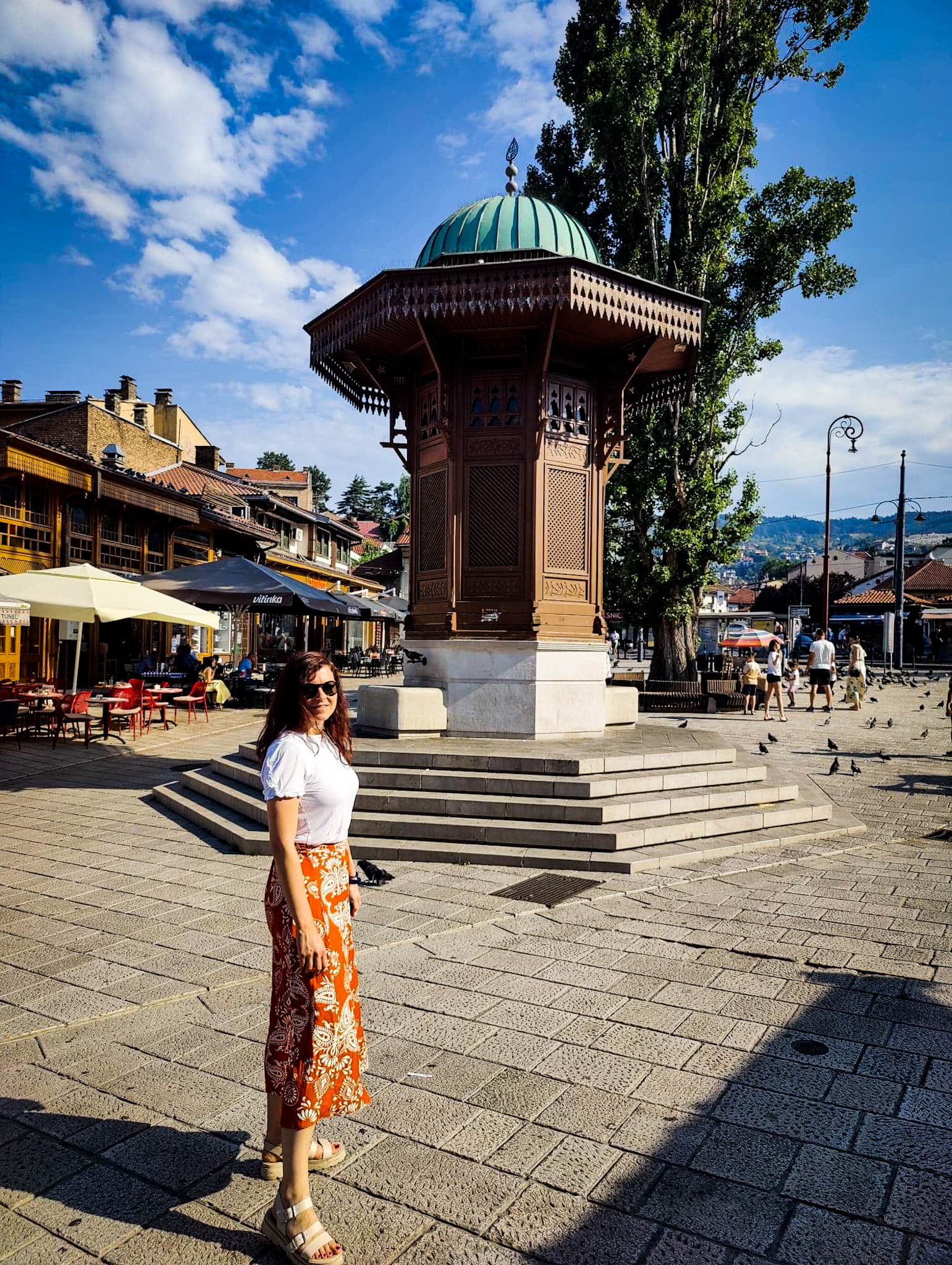
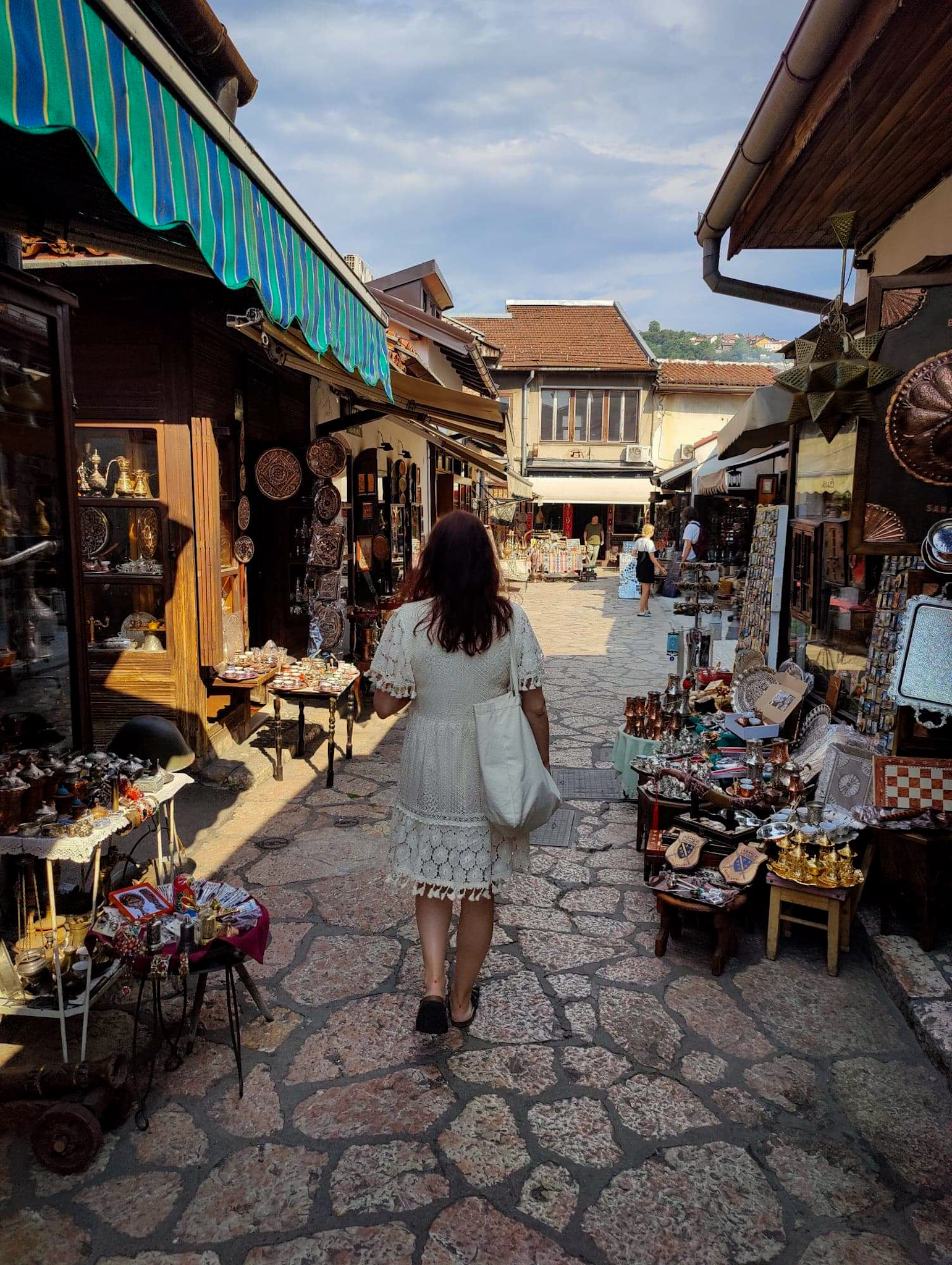
Day 8 - Sarajevo
If you did the free walking tour the first day do the fall of Yugoslavia tour the second day. It is a very popular tour and also organized with Meet Bosnia. You travel in a small van with a tour guide and a driver. The tour takes 4 hours and makes several stops. One of the stops is the tunnel of hope (entrance fee to the tunnel is not included in the tour).
Take the bus to Mostar in the afternoon. It takes about 2.5 hours to get to Mostar. You could also check out the train. The drive from Sarajevo to Mostar is very beautiful!
Vegetarian-friendly restaurant tip: Check out Klopa.
Day 9 - Mostar
Do you dare to jump off the bridge in Mostar? If you are brave enough to jump off the 29 meters high bridge, you can sign up with the Mostar dive club. Before you jump off the bridge you will do a few jumps off a practice board. An instructor will give you tips how to jump safely. If you rather watch people jump you could check out when Red bull organizes the cliff diving in Mostar.
Mostar can get busy during the summer period. There are also a lot of tourists travelling from Croatia visiting Mostar for the day.
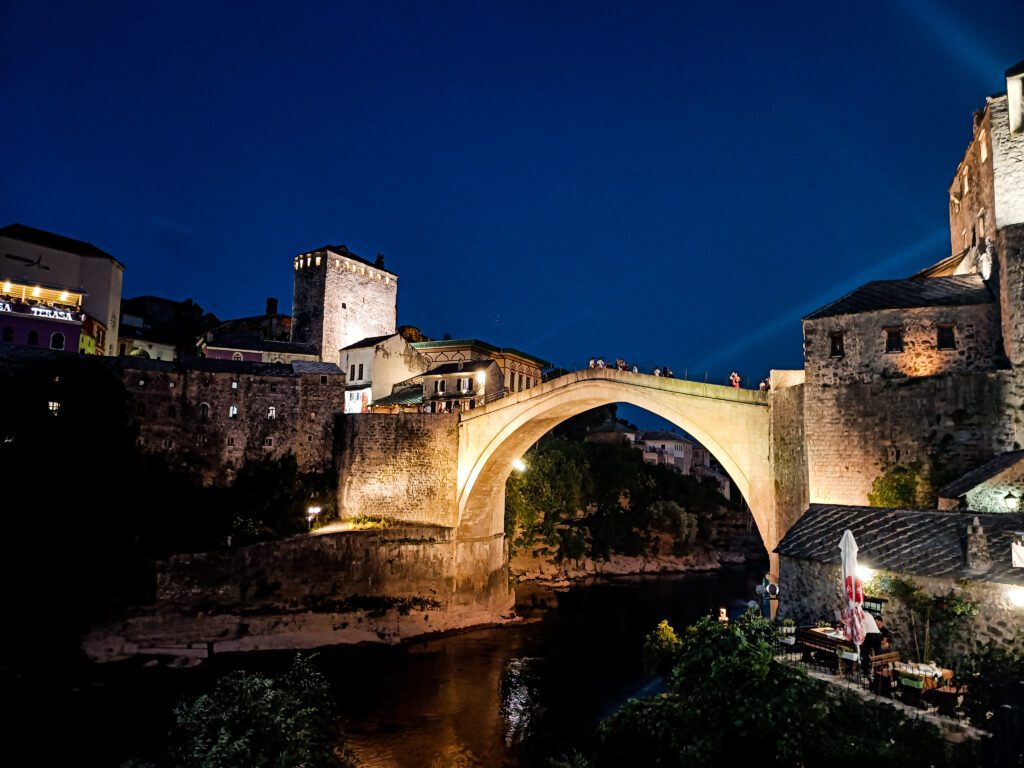
Day 10 - Blagaj, Kravica waterfalls and Počitelj
If you don’t have a car make sure to book a day tour to Blagaj, the Kravica waterfalls and Pocitelj. The ticket is around 25 Euro per person and includes the ticket to the waterfalls.
Your first stop is Blagaj. This monestary is around 500 years old and is situated near the Buna river. Have a look around and continue to the next stop.
The second stop is Pocitelj. The old citadel is from the 14th century. The buildings have a beautiful Ottoman architectural style and were unfortunately damaged during the Bosnian war in 1991. After the war the town returned to its original form and is now listed on the World Heritage List.
The last stop is the Kravica waterfalls. If the entrance ticket to the waterfalls is not included in the tour the fee is 10 KN (2022). Have lunch and enjoy a nice refreshing swim. It can get very busy in summer.
It is also possible to do this day trip from Sarajevo or Dubrovnik (Croatia).
When you get back to Mostar, take the bus to Split. It takes around 4 hours to get from Mostar to Split. You can book your tickets on Flixbus. Make sure to check where your bus leaves from, as there are two bus stops in Mostar.
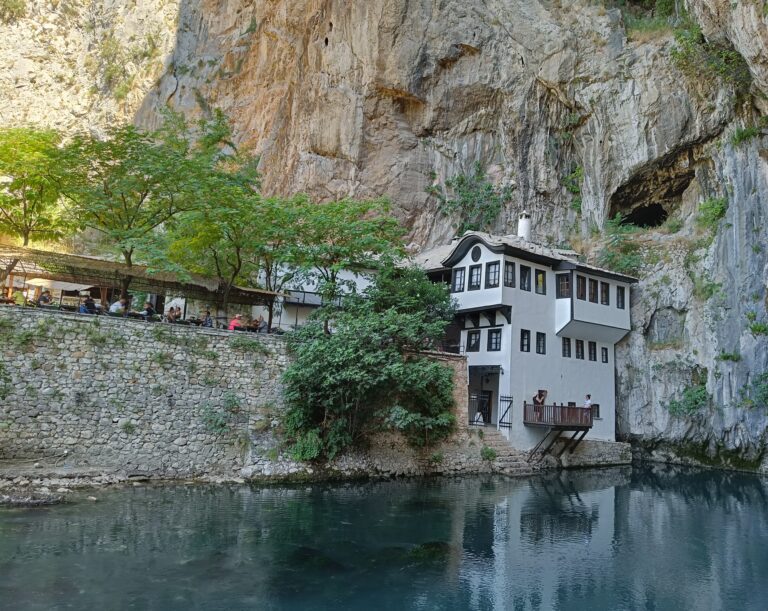
Day 11 - Split
The last country of the Balkans is Croatia. Are you a Game of Thrones fan?! Then this is your city! There is a GOT museum and there are walking tours available that focus on the locations where GOT was filmed.
Do a free walking tour to get to know Split and its history better. Split gets very busy during the summer months, so you might have to book tours in advance or wait in line.
In the months July and August, the National Theatre organizes Split summer festival. During this festival there are open-air performances at Peristyle, the central square of Diocletian’s Palace. Performances include Croatian traditional music as well as classical Operas.
Food tip: Have lunch at To Je Tako Mexican and try out their frozen margaritas.
Day 12 - Hvar
Get away from the busy streets in Split and enjoy the insanely beautiful island of Hvar. Relax and don’t plan too much today. Go to the beach or stroll along the little market near the port. Don’t forget your water shoes. Hvar has rocky beaches and this makes walking a little easier. The island of Hvar is known for their local produce of wine, lavender and olive oil.
Make your way up to Fortica Fortress and enjoy the sunset and the amazing views over the harbour of Hvar.
Food tip: Tucked away in an alleyway is Fig Hvar. They also serve vegetarian food.
Day 13 - Hvar
Rent a private boat and visit the Paklinski islands or take the water taxi (60 kuna per person) and visit Jerolim beach and Carpe Diem beach.
If you decide to take the water taxi, your first stop will be Jerolim beach. This is a very relaxed and peaceful island. The beach is not crowded and there are also sunbeds that you can hire for the day. Heads up: this is a FKK beach. If you don’t feel comfortable you can keep on your swimsuit.
The second stop is Carpe Diem beach. This is a world-famous beach club. The entrance to the beach club is free during the day. You can relax and have lunch and some cocktails, but don’t miss the last boat (unless you want to party till the early hours of the day).
Coffee tip: Try out Kava37 for your caffeine fix.
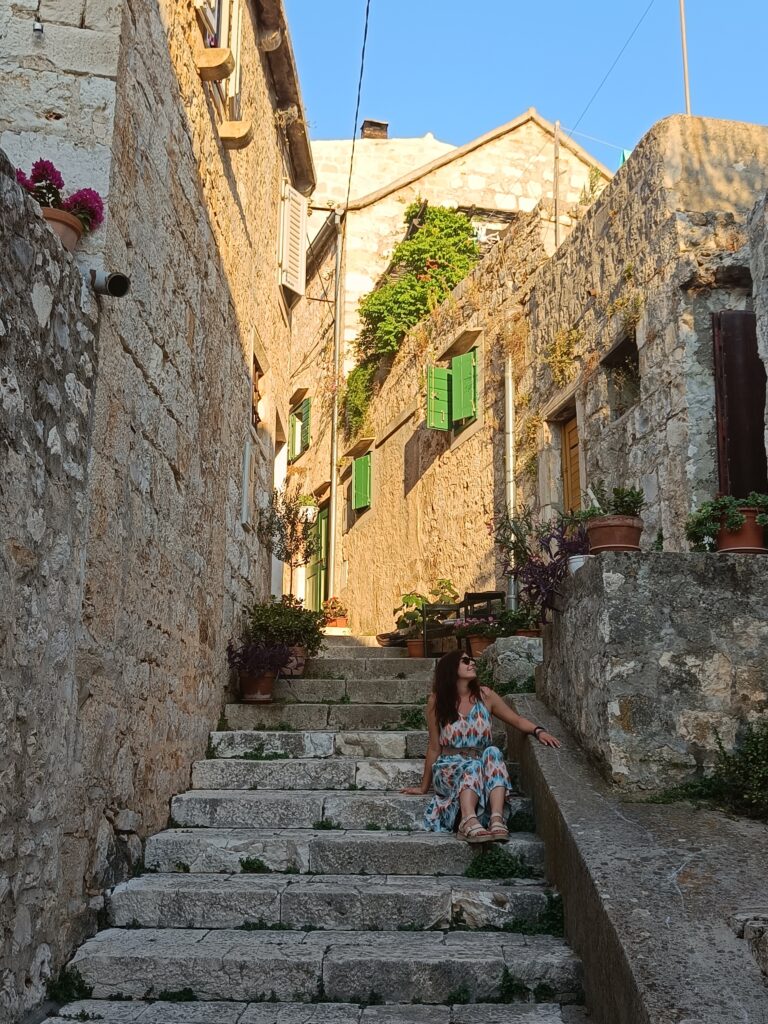
Day 14 - Hvar
Enjoy your last day at the beach before going back to Split. Depending on what time your flight is decide whether to stay the night in Split or in Hvar.
Where to stay?
You are visiting the bigger cities in Serbia and BIH, so there are plenty of hotels and B&b’s in different price ranges. We mainly stayed in Airbnb’s. The Airbnb’s in Serbia and Bosnia – Herzegovina are really affordable.
Make sure to pre-book your accommodation in Hvar and Split, as it gets very busy during the summer period. Also, the cost of accommodation in Croatia is higher than in Bosnia-Herzegovina and Serbia.
Transportation
Belgrade Nikola Tesla Airport is an international airport and very well connected with the rest of Europe. In Serbia we travelled with public transport (Nis Ekspres). The bus routes between the bigger cities like Belgrade, Novi Sad and Nis are well connected. The busses run every few hours. If you decide to go to the national parks or smaller towns in Serbia, BIH or Croatia I would recommend hiring a car.
Flixbus operates between Serbia, Bosnia-Herzegovina and Croatia. Click here for dates, times and prices.
The ferry from Split to Hvar we booked on our first day in Split. Go to the harbor and you will have plenty of options. You could also book the ferry online. Check the dates and prices here. During the summer months the ferry operates a few times per day and the trip takes about one hour.
Split has an international airport and is also a direct flight to and from Amsterdam. A shuttle bus can take you from the bus station (the port of Split) to the Airport. Tickets can be bought on the bus and the journey takes between 30 – 40 minutes. Hvar doesn’t have an airport, so you will have to travel back to Split by boat.
Best time to visit the Balkans?
If you like temperatures of 30 ℃ (86 °F), then summer is the best time to go. Keep in mind that the prices of accommodation are higher in the summer period. Especially for Croatia. Serbia and Sarajevo (BIH) were still pretty quiet. It started to get busier in Mostar (BIH)!
If you prefer to go outside of the summer period, then you could look into travelling in the shoulder months (April- June or Sept – Oct).
Safety
I felt very safe travelling through Serbia, Bosnia-Herzegovina and Croatia. Use common sense and you will have a great time.
Make sure if you go hiking in Bosnia- Herzegovina to follow the official hiking trails and not to go wandering off. There are still active landmines in the forested areas in Bosnia-Herzegovina.
Insurance
Please make sure you have travel insurance. If something happens you will be able to get medical treatment and you can protect your luggage/gear when it gets damaged or stolen. I have my travel insurance with ANWB (Dutch travel insurance), but you could also go with World Nomads.
Cash and currencies in the Balkans
When you are travelling it is always good to have some cash on hand. If you are looking for an ATM to take out cash look for Ziraat bank. We didn’t have to pay any fees to take out cash. Of course this depends on the bank you are with. All three countries have their own currency. Serbia has the Serbian Dinar, Bosnia – Herzegovina the Mark and Croatia the Kuna (2022).
From January 1st, 2023, Croatia will adopt the Euro and will farewell the Kuna. In Croatia we mostly paid by card.
